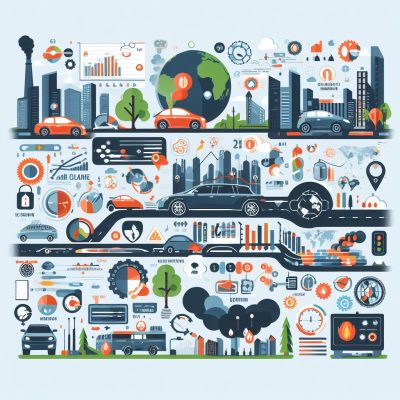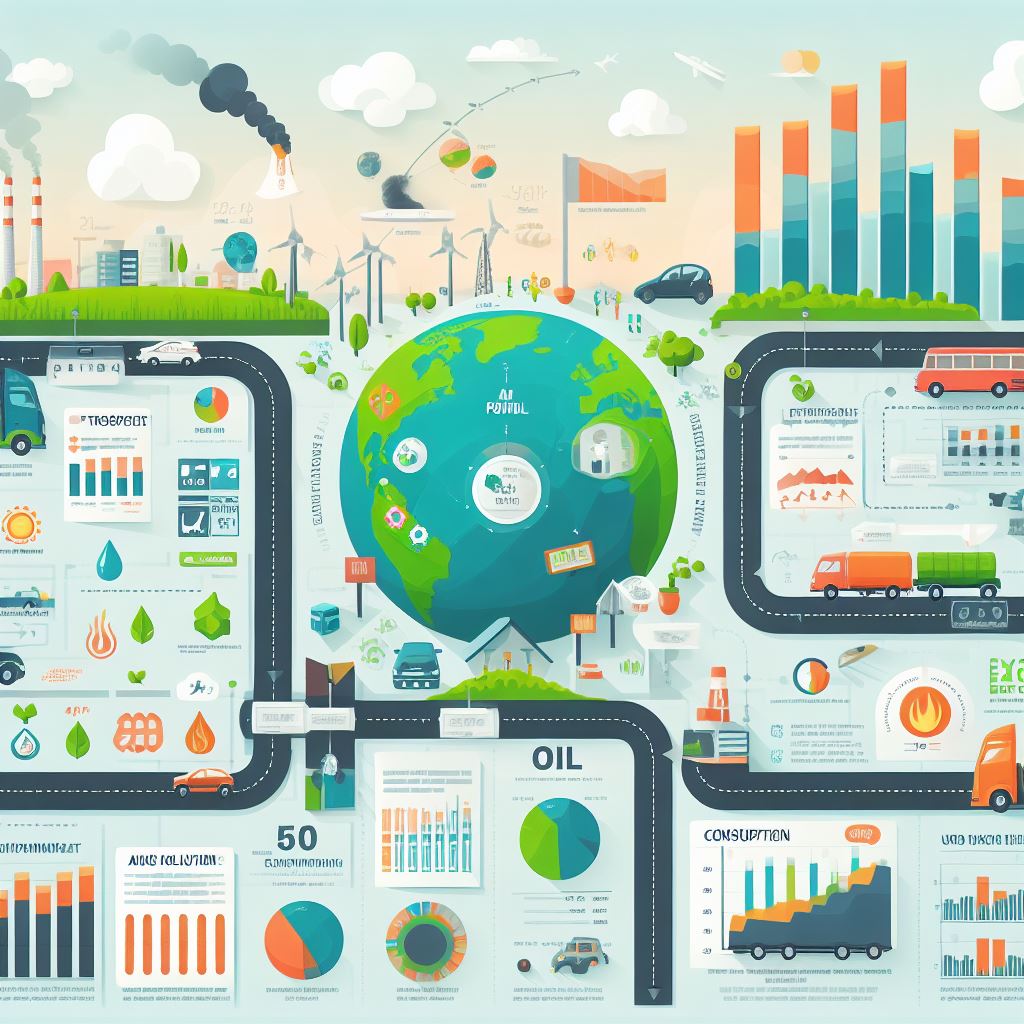Like a dark cloud looming over our cities, vehicle pollution poses a significant threat to our environment and public health.
As the number of vehicles on our roads continues to rise, so does the emission of harmful pollutants.
This article explores the effects of vehicle pollution and offers effective solutions to mitigate its impact.
By adopting cleaner fuels, implementing emission norms, promoting public transportation, and embracing low and zero-emission vehicles, we can pave the way towards a cleaner and healthier future for all.
Key Takeaways
- Use vehicles approved as per the latest emission norms.
- Consider carpooling as an effective and cost-effective way to reduce pollution.
- Explore the use of zero-emission vehicles such as electric cars and electric scooters/bikes.
- Utilize public transportation as a means to significantly reduce air pollution levels.
The Impact of Vehicle Pollution on the Environment
Frequently, vehicle pollution has a detrimental impact on the environment, contributing to global warming, air and soil degradation, and various health issues.
The emissions released by vehicles, such as carbon dioxide, nitrogen oxides, and particulate matter, contribute significantly to the greenhouse effect and global warming. These pollutants trap heat in the atmosphere and contribute to climate change.
Additionally, vehicle pollution leads to the degradation of air quality, as it releases harmful gases and pollutants that can cause respiratory problems, allergies, and other health issues.
Soil degradation occurs when vehicle emissions settle on the ground, contaminating the soil and affecting its fertility.
The negative impact of vehicle pollution on the environment necessitates the implementation of measures to reduce emissions and promote cleaner transportation options.

Effective Strategies to Reduce Vehicle Emissions
Implementing stringent emission standards and promoting the use of alternative fuels are effective strategies to significantly reduce vehicle emissions.
As vehicles are a major contributor to air pollution and greenhouse gas emissions, it is crucial to adopt measures that mitigate their impact on the environment.
Stringent emission standards ensure that vehicles meet certain criteria for pollutant levels, forcing manufacturers to develop cleaner and more efficient technologies.
Additionally, promoting the use of alternative fuels such as electric, hybrid, or biofuels reduces reliance on fossil fuels and decreases exhaust emissions.
These strategies not only help reduce air pollution but also contribute to the overall sustainability and long-term health of the planet.
It is essential for governments, manufacturers, and individuals to work together in implementing and adhering to these strategies to achieve significant reductions in vehicle emissions.
The Role of Technology in Mitigating Vehicle Pollution
Technological advancements play a crucial role in reducing vehicle pollution. They introduce innovative solutions such as electric vehicles, catalytic converters, and efficient fuel management systems.
Electric vehicles (EVs) have zero tailpipe emissions and are powered by electricity, reducing reliance on fossil fuels. They offer a sustainable and environmentally friendly alternative to conventional vehicles.
Catalytic converters are emission control devices that convert harmful pollutants into less harmful substances before they are released into the atmosphere. They have been widely adopted in vehicles to reduce emissions of carbon monoxide, nitrogen oxides, and hydrocarbons.
Efficient fuel management systems help optimize the combustion process, reducing fuel consumption and consequently, emissions.
These technological advancements play a significant role in mitigating vehicle pollution and contribute towards a cleaner and greener future.
The Benefits of Low and Zero-Emission Vehicles
One of the major benefits of low and zero-emission vehicles is that they significantly reduce air pollution and contribute to a cleaner environment. These vehicles, such as electric cars and hybrid vehicles, do not produce tailpipe emissions that contribute to smog and poor air quality.
By using alternative fuel sources and advanced technologies, low and zero-emission vehicles help to reduce greenhouse gas emissions and curb the harmful effects of vehicle pollution on human health and the environment.
Additionally, these vehicles promote energy efficiency and sustainability, as they rely on renewable energy sources and have a lower carbon footprint compared to conventional vehicles.
As the world becomes more conscious of the need for sustainable transportation options, the adoption of low and zero-emission vehicles is crucial in achieving a greener and healthier future.
Understanding the Challenges of Electric Vehicles and Pollution
The challenges of electric vehicles and pollution are multifaceted, requiring careful consideration and effective solutions to mitigate environmental impacts.
While electric vehicles are often touted as zero-emission vehicles, it is important to acknowledge that they are not without their own environmental challenges. The manufacturing process and disposal of batteries for electric vehicles contribute to pollution. Additionally, the production of electricity, often using fossil fuels, still contributes to air pollution.
It is crucial to address these challenges by promoting sustainable manufacturing practices and transitioning to renewable energy sources for electricity production. Furthermore, improving battery technology and implementing proper recycling and disposal methods can help reduce the environmental impact of electric vehicles.
It is evident that a holistic approach is necessary to ensure that electric vehicles truly become a cleaner and more sustainable form of transportation.
Policy Measures and Regulations to Combat Vehicle Pollution
Effective policy measures and regulations are crucial in the ongoing efforts to combat vehicle pollution. With the increasing number of vehicles on the roads, it is imperative to implement strict emission norms and penalties for non-compliance. Governments need to promote adherence to these regulations to effectively tackle pollution.
Additionally, the promotion of low and zero-emission vehicles (LEV/ZEV) can significantly reduce carbon emissions. These vehicles, such as electric cars and hybrids, provide alternatives to conventional fuel vehicles and have onboard power sources that allow efficient power delivery.
Furthermore, investing in technological innovations like catalytic converters and four-stroke engines can contribute to reducing vehicle emissions.
Conclusion
In conclusion, vehicle pollution poses significant threats to the environment and public health.
However, by implementing effective strategies such as the use of cleaner fuels, emission norms, and promoting public transportation, we can mitigate the impact of vehicle emissions.
Additionally, the adoption of low and zero-emission vehicles, such as electric cars, can provide significant benefits in reducing pollution. For example, the city of Oslo in Norway has seen a substantial decrease in pollution levels after implementing policies that incentivize the use of electric vehicles.
Such initiatives demonstrate the potential for creating a cleaner and healthier environment for future generations.
